Instead of working with voltage and resistance (or impedance), maybe it would be better to work with voltage and current, since the current will no longer be in phase with the voltage. This is assuming you have a good feedback loop, voltage mode (as most audio amplifiers are -- another assumption), that keeps the output in phase with the input, times amplification. Also, ideal case.
The dissipated power by one transistor would be:
$$P_d=V_{CE}*I_C$$
$$V_{CE}=V_{V_+}-V_{out}$$
For the case where the load is a resistance, the output current is in phase with the output voltage and it will be formed by the positive (or negative, for the lower transistor) waveform of the current: \$\frac{K}{R}\sin \omega t\$ (\$K\$ being the amplification).
\$V_{out}\$ is sinusoidal, the supply constant and larger than the maximum peak ouput (avoiding saturation), and the output \$K\sin \omega t\$. Thus it's an inverted sine with a DC component. But it will only be relevant for the 1st half of the period, since the current is null in the 2nd half: \$V_+ - K\sin\omega t\$
So the total dissipated power will be:
$$P_d=\int^T_0{\left(V_+ - K\sin\omega t\right)\left(\frac{K}{R}\sin\omega t\right)\text{d}t}$$
$$P_d=\frac{4 K V_+ - \pi K^2}{4\pi R}$$
If the load is reactive (inductance), the output voltage will be in phase with the input but the current will lag. The voltage across the transistor will be the same, so will the current, but it will have a delay (negative value for \$\phi\$ for inductive): \$\frac{K}{Z}\sin\omega t+\phi\$. The load will be a complex impedance, and its magnitude will be: \$Z=\sqrt{R^2+(2\pi f L)^2}\$
So the dissipated power will also only be valid for the time the transistor conducts, but now it will start at \$\phi\$ and last half a period; this also affects \$V_{CE}\$. It will take the form:
$$P_d=\int^T_0{\left(V_+ - K\sin\omega t\right)\left(\frac{K}{R}\sin\omega t+\phi\right)}\text{d}t$$
$$P_d=\frac{4 K V_+ - \pi K^2\cos\phi}{4\pi Z}$$
which is very similar to the one above except the \$\cos\phi\$ term, and \$Z\$ instead of \$R\$.
Let's test these. Suppose the supply is 12V symmetric, R=4, K=10, input is 1V@1Hz. For inductance, you need \$\phi=-\frac{\pi}{3}\$ so L~1.1H (actually \$\frac{2\sqrt{3}}{\pi}=1.10266\$):
$$P_d(R)=\frac{4 K V_+ - \pi K^2}{4\pi R}=\frac{4*10*12 - \pi*10^2}{4\pi*4}=3.2993\text{W}$$
$$P_d{Z}=\frac{4 K V_+ - \pi K^2\cos\phi}{4\pi Z}=\frac{4*10*12-\pi*10^2*0.5}{4\pi\sqrt{4^2+(2\pi 1.1)^2}}=3.218\text{W}$$
Here's a quick schematic in LTspice:

As you can see, I have .step'd the value of the inductance from \$1.1\mu\text{H}\$ (insignificant @1Hz) to \$1.1\text{H}\$, and plotted, separately, the dissipated powers across the upper leg "transistor". The red and green lines are the averaged values, and they read 3.29426 for the R load, and 3.211216 for the Z case. Considering that the calculations above are done ideally, and LTspice has some \$1m\Omega\$ resistances somewhere in there, the differences are negligible, so I think this can be called a success.
If you want to account for losses, or (quasi-)real components, then the situation gets much fluffier, but by then I'd expect you to no longer use pen and paper...
